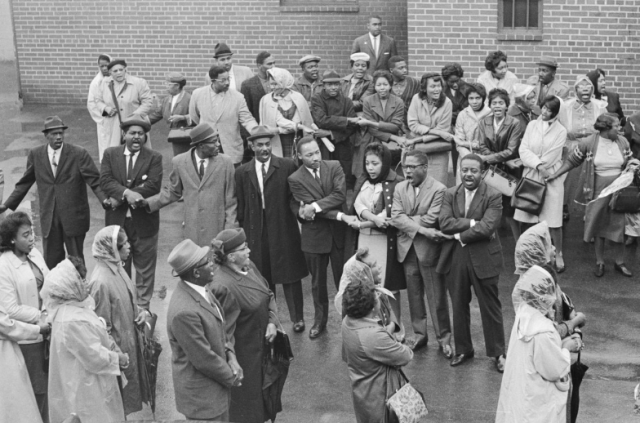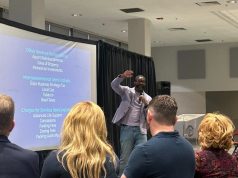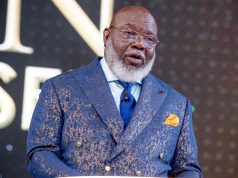
By Barnett Wright
The Birmingham Times
This story is part of a series of articles, “Bending Toward Justice,” focusing on the 60th anniversary of events that took place in Birmingham during 1963 that changed the face of the city, and the world, in the ongoing struggle for equality and human rights. The series name is a reference to a quote by the Rev. Martin Luther King Jr.: “Let us realize the arc of the moral universe is long but it bends toward justice.” The series will continue through 2023.
The second week of May, 1963 would prove crucial to the end of protests in Birmingham and an agreement to begin desegregating the city and ultimately lead to passage of the landmark Civil Rights Act of 1964. Here’s how it happened.
Monday, May 6, 1963
As the demonstrations continued in downtown, Kelly Ingram Park was sealed off after many Blacks had showered police with bottles and rocks during early marches. To reduce the chance of conflict with Blacks who were not a part of the Movement, Eugene “Bull” Connor, public safety commissioner ordered his men to shut down the park, which had become a war zone.
The demonstrators kept marching. Comedian and activist Dick Gregory led 19 children out of Sixteenth Street Baptist Church for the day’s marches. The police captain on duty called for the paddy wagon after the standard warning of arrest. The children came so continuously out of the church that police dispensed with the warning and led the demonstrators onto the paddy wagons and buses.
Dr. Martin Luther King Jr.’s aides, fearing that a riot soon would tarnish the largest single day of nonviolent arrests in American history, raced outside to call the demonstration to a halt at 2:40 p.m. By the day’s end, nearly 800 people had marched to jail from church, and more than 200 reached the same destination from surprise picket lines in the downtown business district.
Tuesday, May 7, 1963
Children continued to demonstrate and The Rev. Fred L. Shuttlesworth, the iconic Birmingham pastor and local leader of the Civil Rights Movement, was hospitalized with injuries inflicted by high-powered water hoses on the steps on the Sixteenth Street Baptist Church. Shortly before noon a group of 14 children marched out of the church toward downtown.
Movement leaders made a strategic decision to flood the business district with masses of demonstrators. Many of the downtown businesses had been emptied of both Blacks and whites. Business leaders began to realize the problems the city was beginning to face and the looming economic and social catastrophe, which former chamber of commerce president Sidney Smyer called a “black eye” for Birmingham. The entire white business establishment was called by Smyer, president of Birmingham Realty Co. and former legislator, to an emergency meeting at the Chamber of Commerce to see what could be done.
Meanwhile, at 10 a.m., Dr. King held another press conference at the Gaston Motel. Addressing the huge assembly of reporters, he said: “Ladies and gentlemen, I would like to say briefly that the activities which have taken place in Birmingham over the last few days to my mind mark the nonviolent movement’s coming of age. This is the first time in the history of our struggle that we have been able to fill the jails.” Even as Dr. King spoke, young demonstrators made their way unobtrusively toward a dozen rendezvous points scattered around the business district.
Meanwhile, at Sixteenth Street, Shuttlesworth was organizing groups of young protestors. While heading down the stairwell into the basement of the church, he heard a voice near the fire trucks on the street say, “Let’s put some water on the reverend.” Shuttlesworth looked up to see water arching toward him-100 pounds per square inch. He put his hands over his face and “spoke heart to heart with the Lord,” saying, “If you’re ready for me, I’ll come.” Then, a jet of water swept him down the stairs and slammed him against the wall.
“Oh, my God, Rev. Shuttlesworth is struck,” someone said. He was still trying to catch his breath when he was placed on a stretcher and loaded into an ambulance.
Emma Smith Young, then 59, was a veteran of many demonstrations from Birmingham City Hall to Selma. She was marching with her children when Shuttlesworth was injured.
“I was there at Sixteenth Street Baptist Church when Fred Shuttlesworth was hit with water and knocked off the steps of the church. My son, Dave, tried to go across and pick up Shuttlesworth, to keep them from killing him. Bull Connor was sitting across the street yelling, ‘Put that water on the nigger.’ He had them put the water on him, making Shuttlesworth go farther, farther, and farther down the sidewalk.”
Malcolm Hooks, 15 years old in 1963, grew up in Riley-Travellick, a Black community in the southwest part of Birmingham. A student at Wenonah Elementary, he got involved with the Movement through his older brother and sister. Hooks provided a vivid description of the incident involving Shuttlesworth and the events that followed.
“When we arrived at the church, I was standing on the stairs waiting for the group I was assigned to line up with. As I waited, the police began using water hoses, and Rev. Shuttlesworth, who was next to me, was hit, but luckily my father pushed me out of the way. Rev. Shuttlesworth went over the railing and broke a couple of ribs and had to be hospitalized.”
Wednesday, May 8, 1963
With behind-the-scenes mediation from federal officials, the demonstrations were postponed, and Movement leaders said white business leaders were acting in good faith to settle issues of concern. Burke Marshall, Attorney General Robert Kennedy’s assistant, had been in Birmingham to play a mediating role. Under his direction, Black and white representatives met together for the first time in the office of Smyer, who had been embarrassed in Tokyo at the International Rotary Convention when a picture of the Freedom Riders being beaten in Birmingham appeared in the Japanese press.
Thursday, May 9, 1963
Negotiations to end the demonstrations lasted most of the day.
Friday, May 10, 1963
Leaders of the demonstrations, represented by Dr. King, and the white business community, represented by Smyer, reached an agreement which included an end to the protests.
Dr. King said the agreement provided:
“1. Desegregation of lunch counters, restrooms, fitting rooms, and drinking fountains in downtown stores in planned stages within the next ninety days.
- The upgrading and hiring of Negroes on a non-discriminatory basis, including the hiring of Negroes as clerks and salesmen within the next sixty days.
- Arrangements for the release of all persons arrested during racial demonstrations on bond or personal recognizance.
- Communications between Negroes and white persons to be re-established within the next two weeks.”
Wyatt Tee Walker, Dr. King’s chief of staff, announced a noon press conference at Sixteenth Street Baptist-but the church was crowded with marching shoes, just in case. Two o’clock came and went before Walker appeared in the motel courtyard with Shuttlesworth, Dr. King, and Abernathy.
They sat down, visibly tired, at a round metal table. Shuttlesworth read a prepared statement:
“Birmingham reached an accord with its conscience today. The acceptance of responsibility by local white and Negro leadership offers an example of a free people uniting to meet and solve their problems. Birmingham may well offer for 20th-century America an example of progressive race relations, and for all mankind a dawn of a new day, a promise for all men, a day of opportunity and a new sense of freedom for America.”
As reporters fired questions about the sincerity of the white negotiators, Shuttlesworth said he wasn’t feeling well and walked away to the applause of his crowd of supporters. But after taking a few steps he fainted.
Barnett Wright is the editor of The Birmingham Times and author of “1963: How the Birmingham Civil Rights Movement Changed America and the World.”




